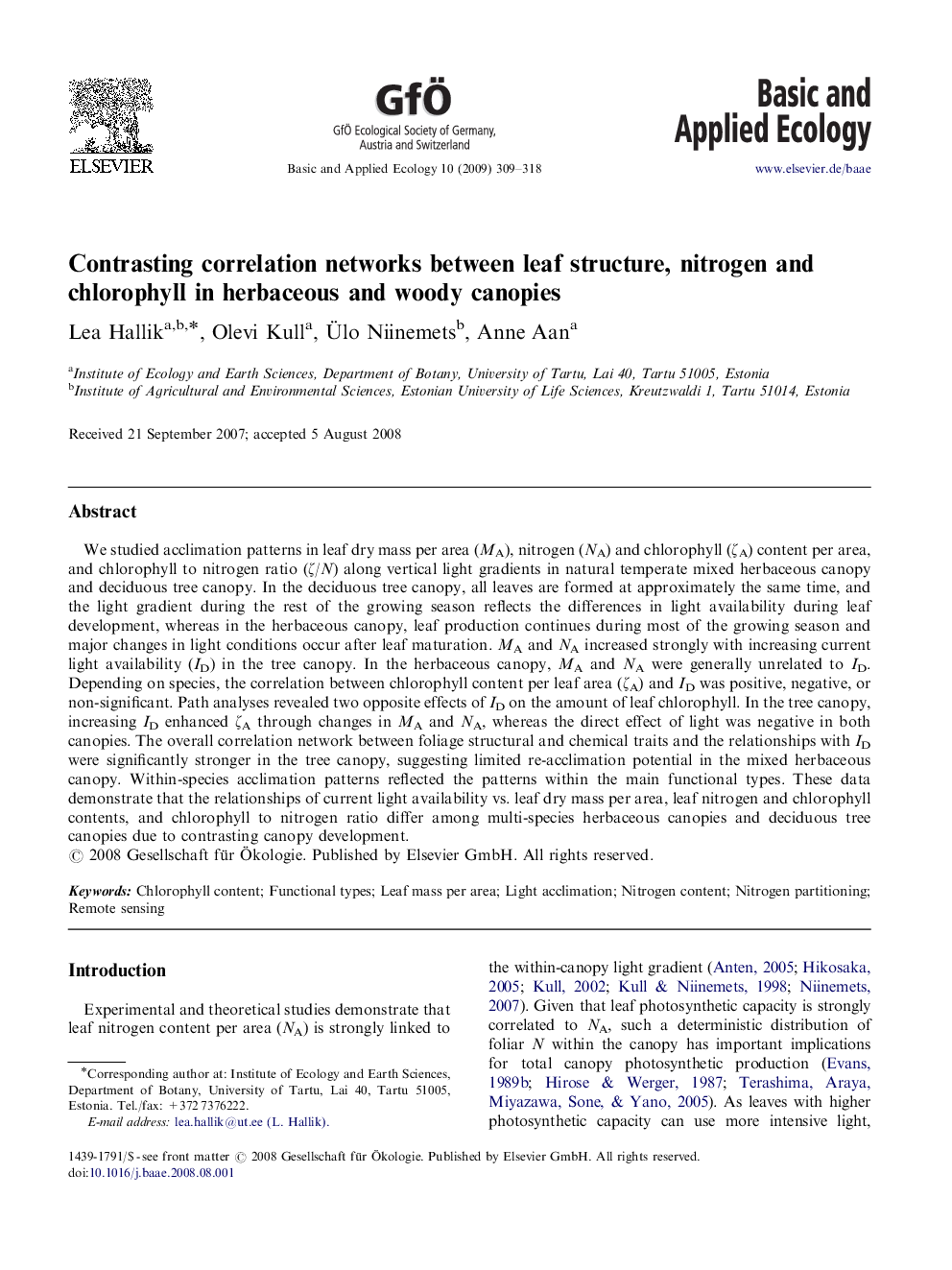| Article ID | Journal | Published Year | Pages | File Type |
|---|---|---|---|---|
| 4384639 | Basic and Applied Ecology | 2009 | 10 Pages |
We studied acclimation patterns in leaf dry mass per area (MA), nitrogen (NA) and chlorophyll (ζA) content per area, and chlorophyll to nitrogen ratio (ζ/N) along vertical light gradients in natural temperate mixed herbaceous canopy and deciduous tree canopy. In the deciduous tree canopy, all leaves are formed at approximately the same time, and the light gradient during the rest of the growing season reflects the differences in light availability during leaf development, whereas in the herbaceous canopy, leaf production continues during most of the growing season and major changes in light conditions occur after leaf maturation. MA and NA increased strongly with increasing current light availability (ID) in the tree canopy. In the herbaceous canopy, MA and NA were generally unrelated to ID. Depending on species, the correlation between chlorophyll content per leaf area (ζA) and ID was positive, negative, or non-significant. Path analyses revealed two opposite effects of ID on the amount of leaf chlorophyll. In the tree canopy, increasing ID enhanced ζA through changes in MA and NA, whereas the direct effect of light was negative in both canopies. The overall correlation network between foliage structural and chemical traits and the relationships with ID were significantly stronger in the tree canopy, suggesting limited re-acclimation potential in the mixed herbaceous canopy. Within-species acclimation patterns reflected the patterns within the main functional types. These data demonstrate that the relationships of current light availability vs. leaf dry mass per area, leaf nitrogen and chlorophyll contents, and chlorophyll to nitrogen ratio differ among multi-species herbaceous canopies and deciduous tree canopies due to contrasting canopy development.
